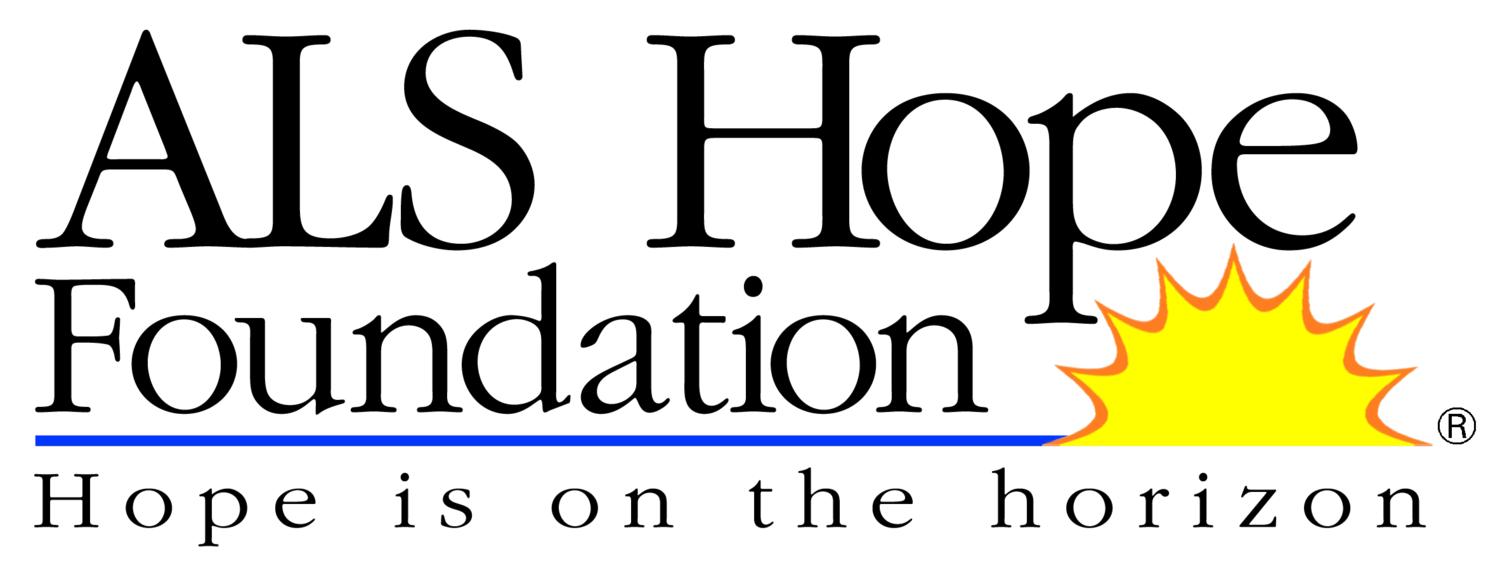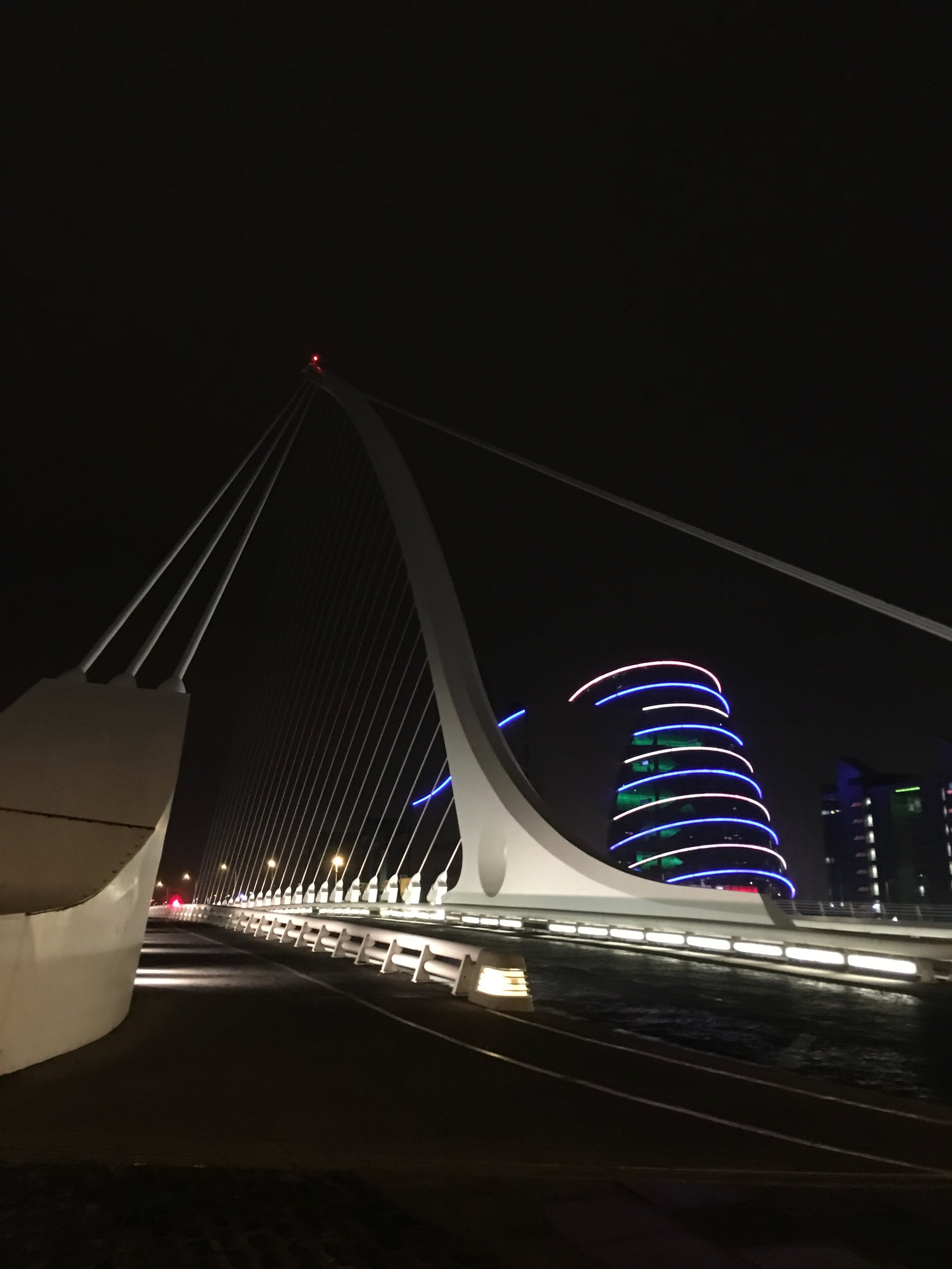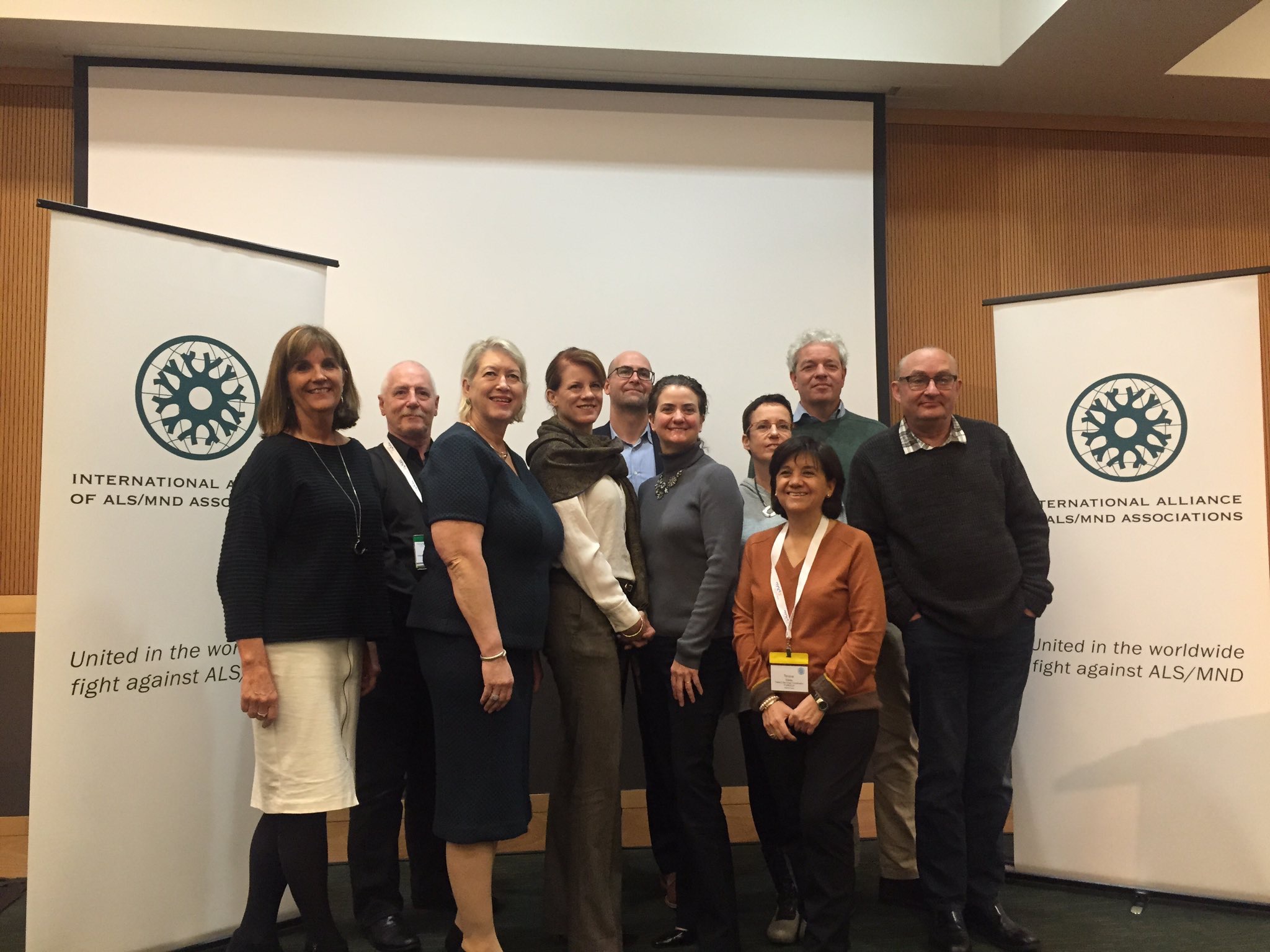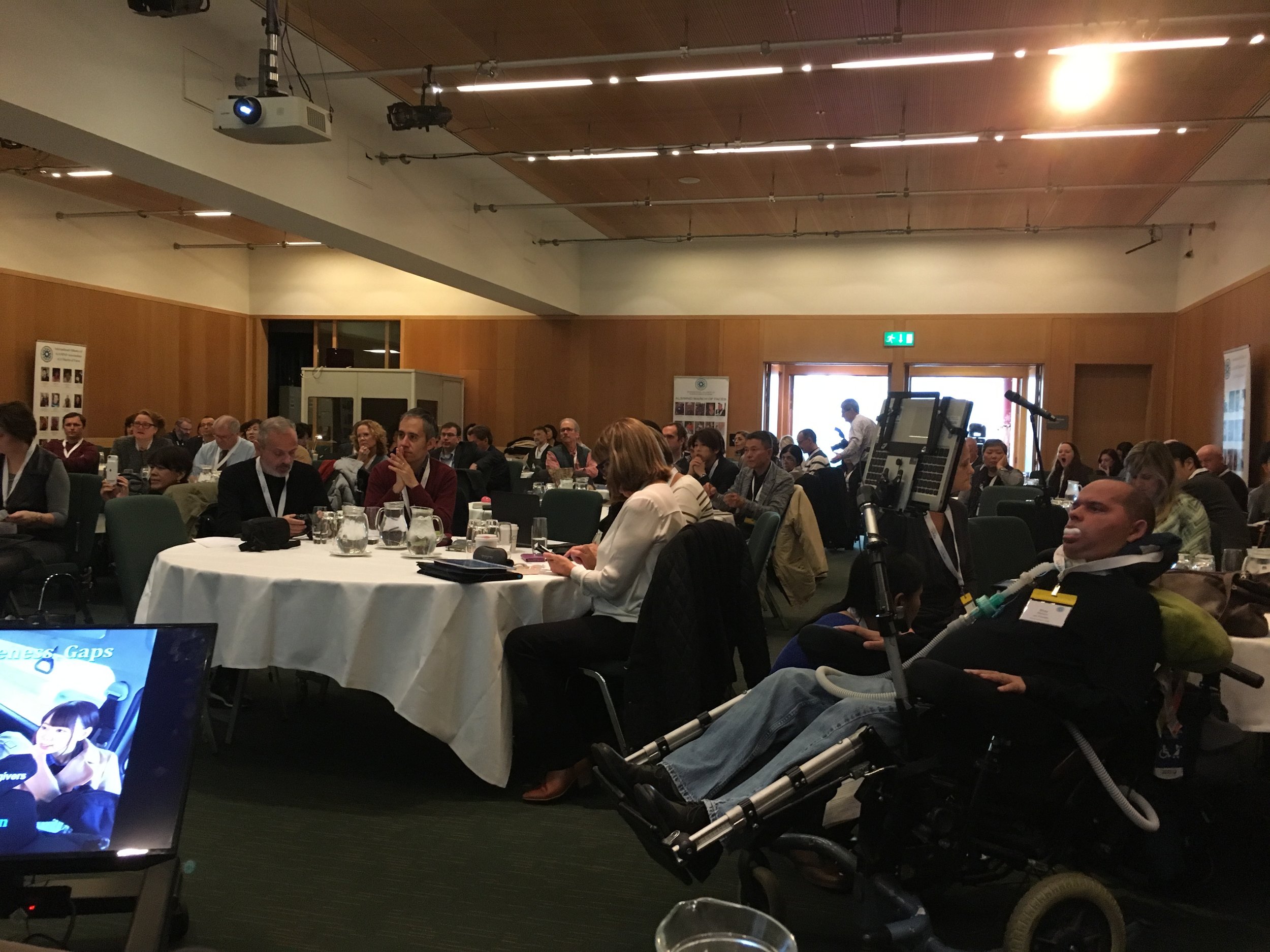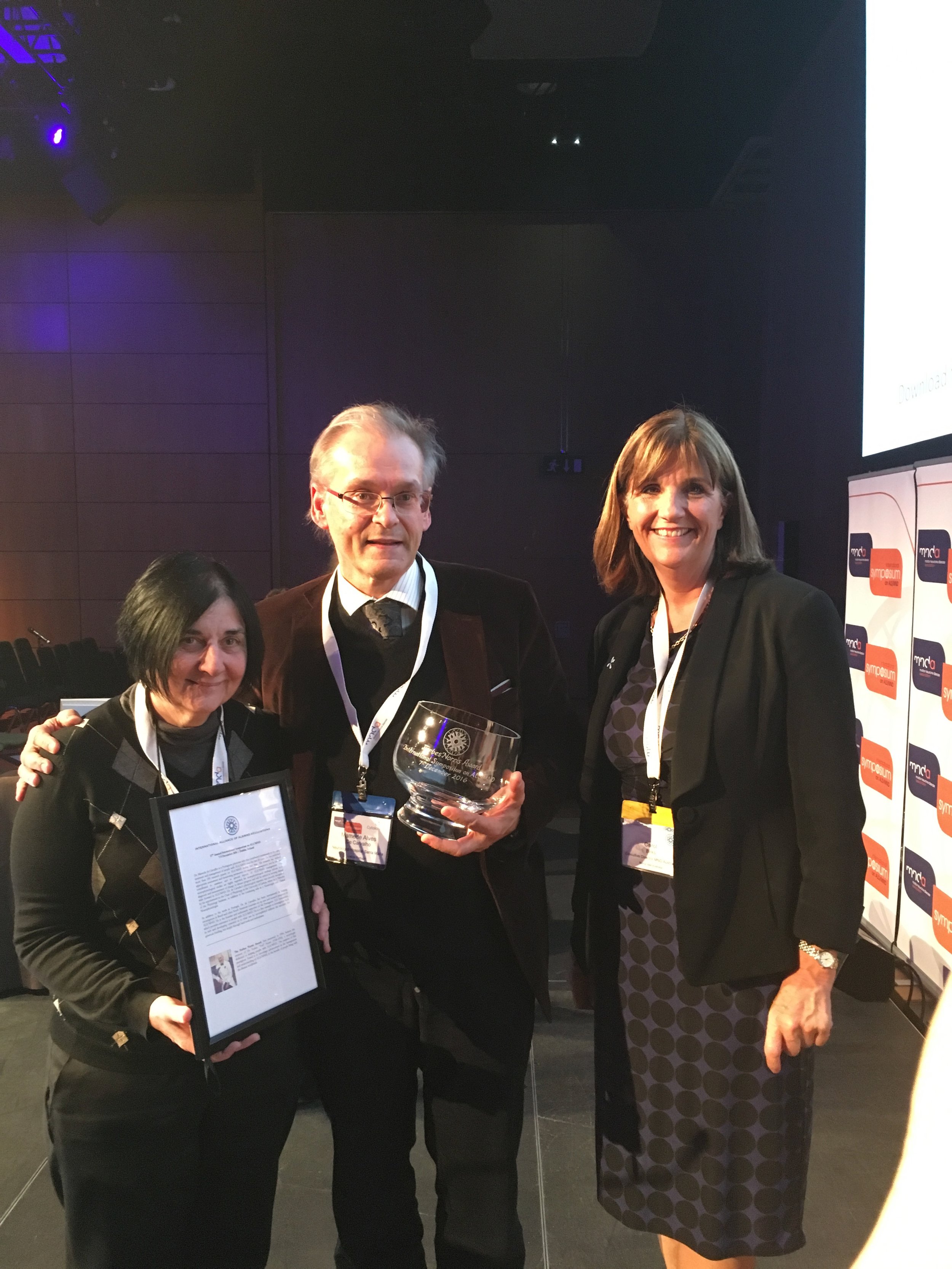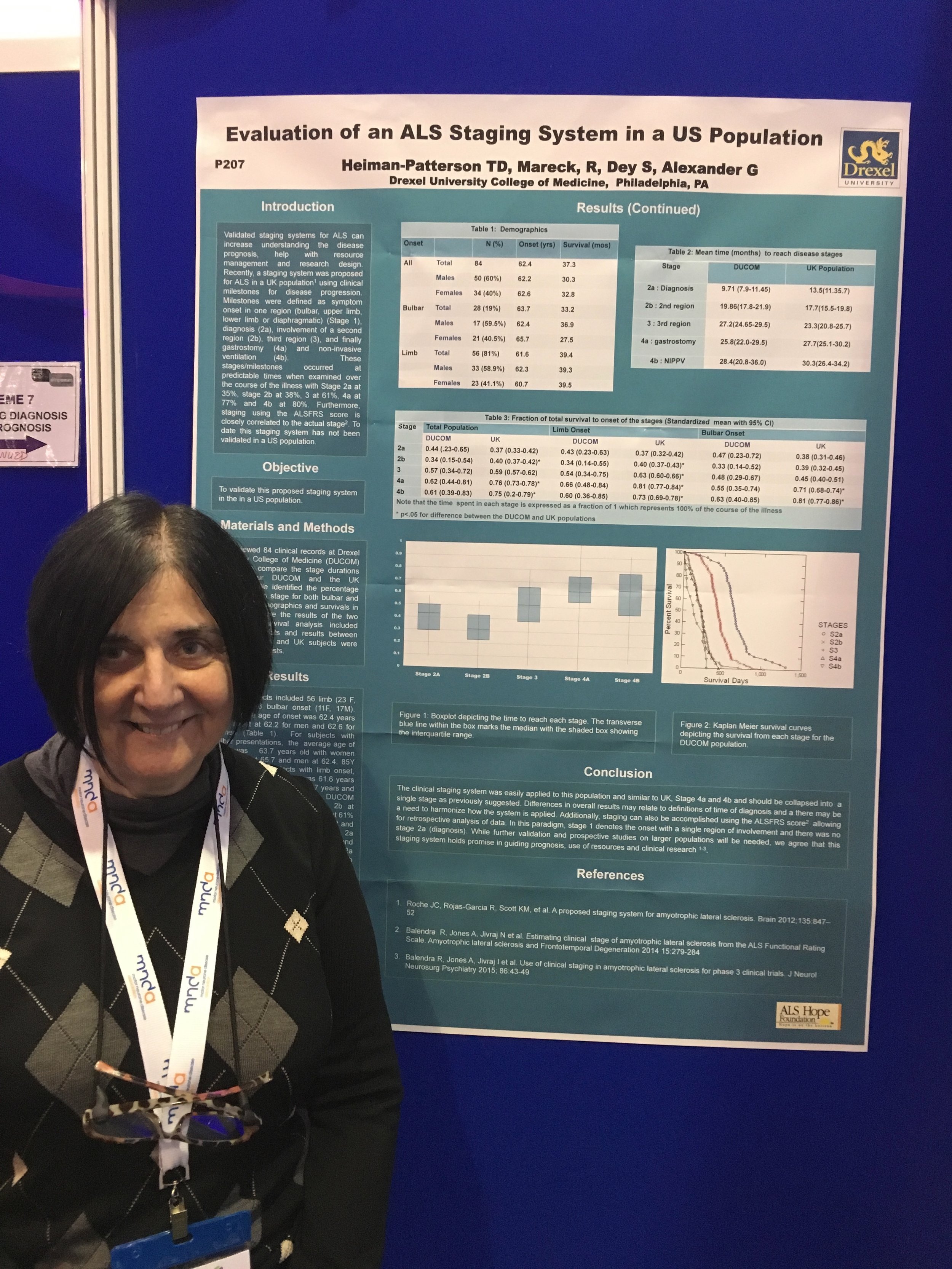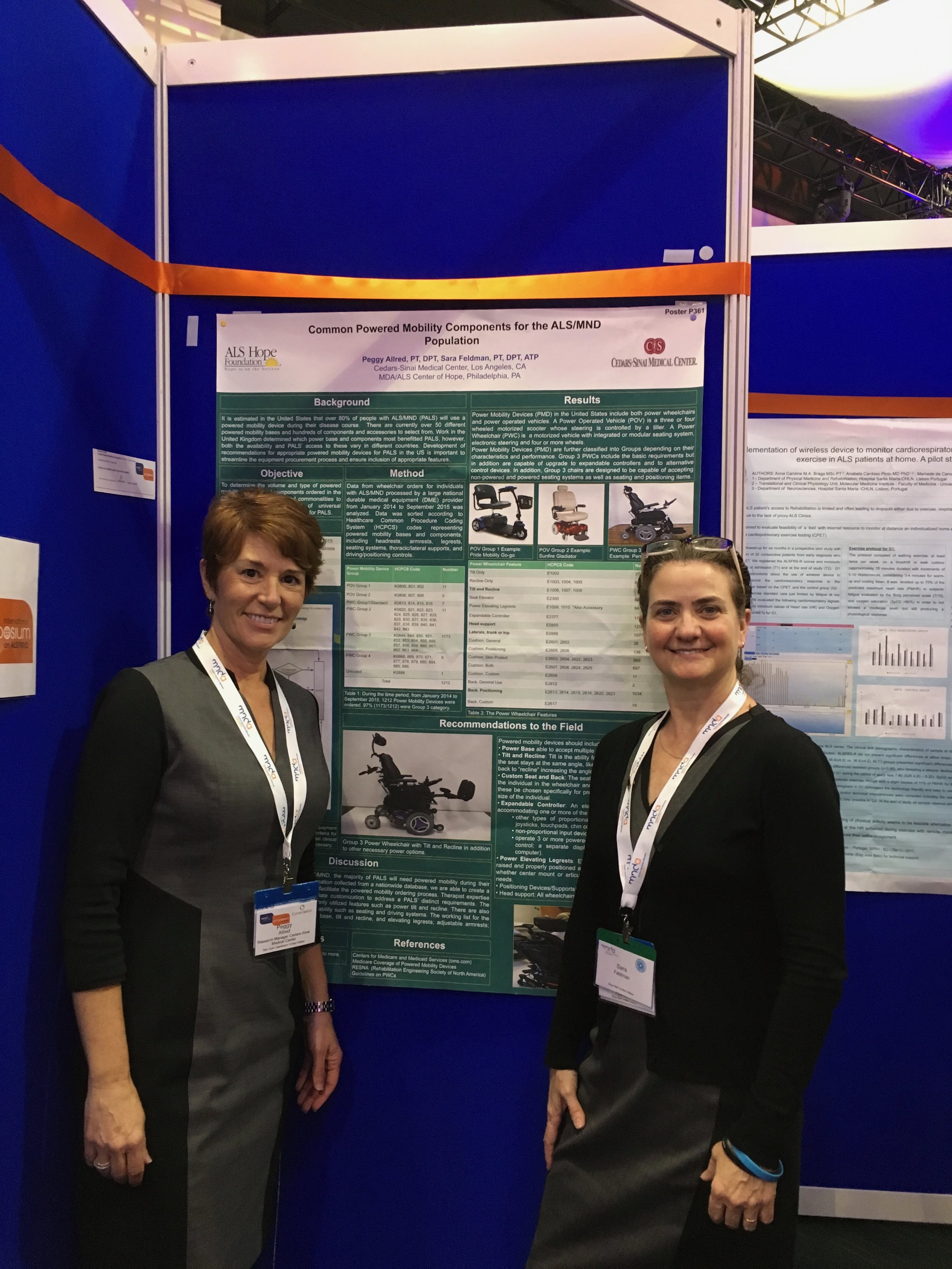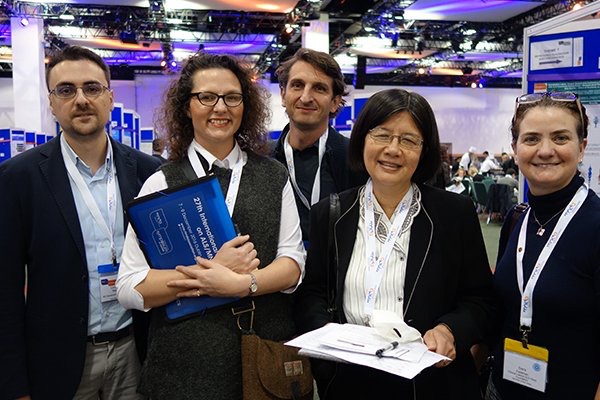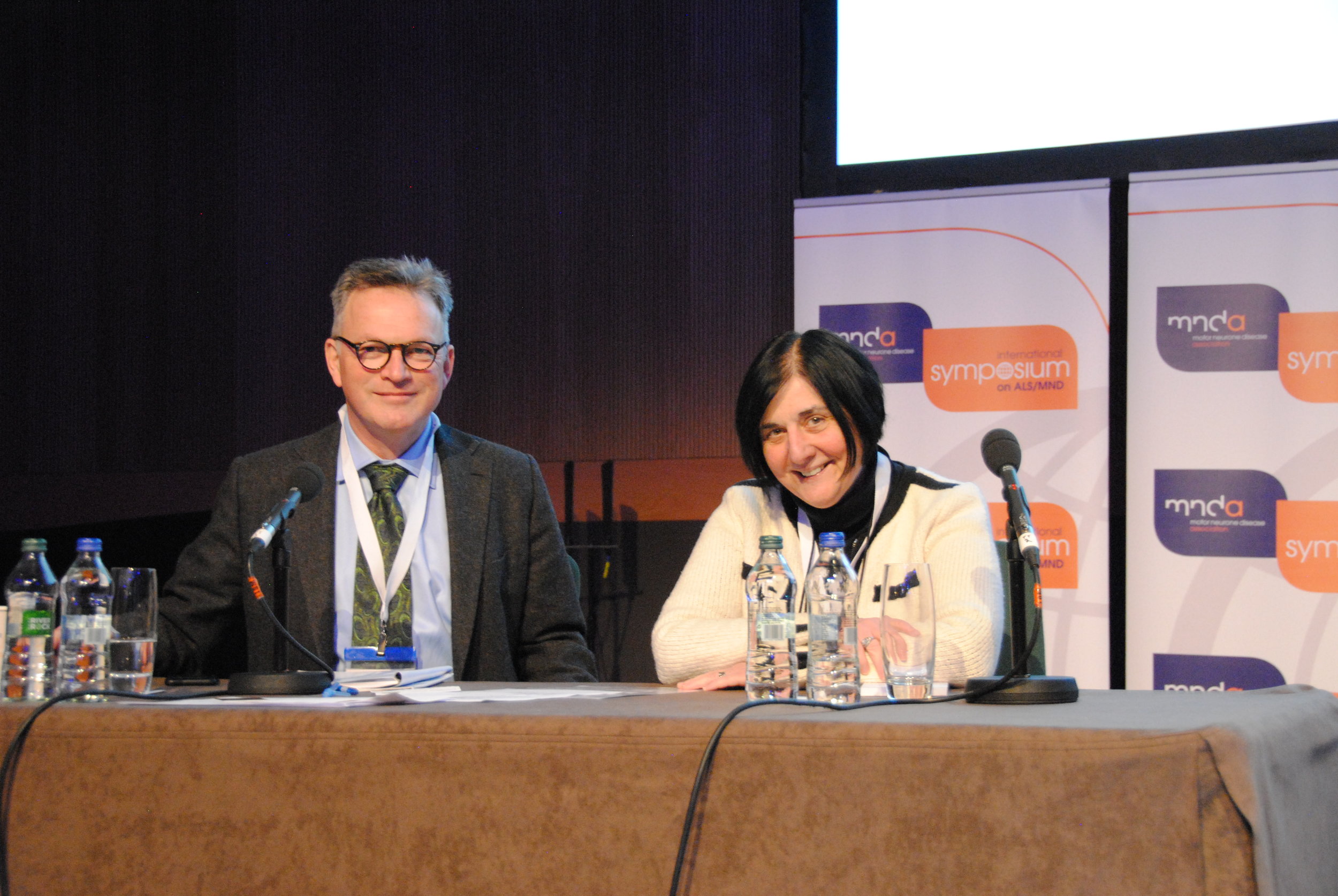The 27th International Symposium on ALS/MND was held in Dublin, Ireland this year. Terry Heiman-Patterson, MD and Sara Feldman, DPT, ATP, spent the week with approximately 1200 scientists, clinicians, association members and PALS/CALS attending meetings, sessions, posters and presentations. This symposium is put on every year by the MND Association of England, Wales and Northern Ireland and was hosted this year by the Irish MND Association.
The week of meetings began December 4, 2016 when Chairwoman Carol Birks (MND Australia) opened the International Alliance of ALS/MND Associations meeting. The Alliance brings together ALS/MND organizations from around the globe. The ALS Hope Foundation has been a member of this international group of ALS/MND organizations since about 2001. We are pleased to announce that Sara Feldman was re-elected to the Board of Directors for another three-year term. Follow this link to the Alliance website to read more about the meeting and the Alliance.
The Ask the Experts event is held the second day of the meetings. This year’s panel included Dr. Jonathan Glass (Emory), Dr. Jeremy Shefner (Barrows) and Dr. Jan H. Veldink (Utrecht). Click here for the archived session. Thanks to the ALS Association, this event was lived streamed so people unable to attend the conference were able to participate in the discussion.
This year, during the second day, the final judging of the Prize4Life and ALS Associations AT Challenge took place. Terry Heiman-Patterson was honored to be a member of the judging panel for this prize. Click here to find out more about this challenge and find out who won!
Next, the Allied Professionals Forum was held on December 6, 2016. This is a day-long session developed for Allied Health Professionals and the ALS Hope Foundation is proud to be a sponsor again this year. Sara Feldman is co-chair along with Steve Bell (MND Association). The presentations from the APF can be found here.
Last, but not least, the 27th International Symposium on ALS/MND took place on December 7-9, 2016. Sally Light (MND Association) opened the Symposium and IMNDA welcomed everyone in attendance. Dr. Heiman-Patterson was a member of the Scientific Review Board for this year’s conference and was on the abstract selection committee; Sara Feldman was on the judging panel for the clinical poster prize.
Dr. Heiman-Patterson presented 2 posters, “Evaluation of an ALS Staging System in a US Population,” and Understanding the Use of Noninvasive Ventilation in the Treatment of ALS: Results of an International Physician Survey.” Sara Feldman, PT, DPT, ATP, presented a poster with Peggy Allred, PT, DPT (Cedars-Sinai) on “Common Powered Mobility Components for the ALS/MND Population.”
Dr. Heiman-Patterson chaired the final session of the Symposium with Kevin Talbot (UK).
Next year, the 28th International Symposium on ALS/ MND will be held in Boston, Massachusetts and the ALS Hope Foundation will be co-hosting with ALS Therapy Development Institute.
The meetings were stimulating and inspiring; motivating and thought-provoking; encouraging and promising. Scientists, clinicians, associations, PALS, CALS, everyone was present and everyone participated in the conversation. We know that for PALS, time is limited and precious and we all feel the urgency. Know that at any given moment, someone, somewhere around the globe is working on better treatment, improved care, and to find a cure for ALS/MND.
